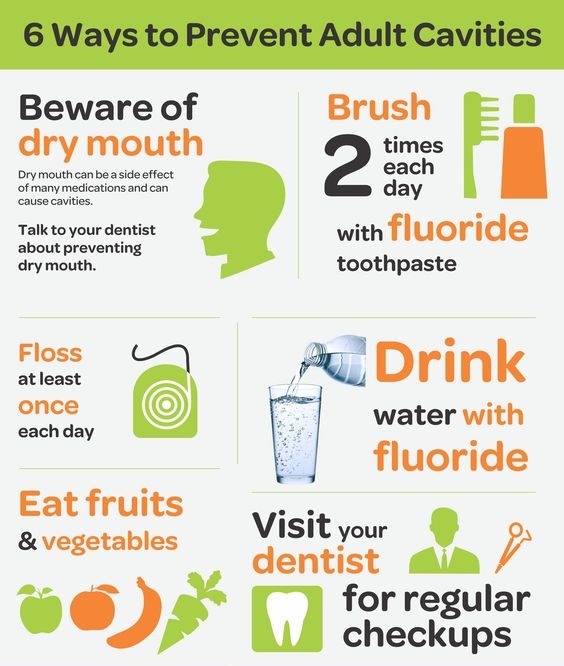
What’s baby bottle tooth decay?
Baby bottle tooth decay is caused by long exposure of your child’s teeth to liquids containing sugar. Children that fall asleep with a bottle in their mouth or are constantly drinking from the bottle are at higher risk of developing baby bottle tooth decay.
Why should be worried about baby bottle tooth decay?
If baby bottle tooth decay is noticed in its early stage, Fluoride treatment may be an option. If your child is experiencing a more severe cause of baby tooth decay, your pediatric dentist will provide you with the best recommendation for your child. In some cases, a cap is placed on the baby tooth.
How to prevent baby bottle tooth decay?
- Don’t let your child fall asleep with their bottle in their mouth.
- Limit or eliminate sugary drinks and encourage the intake of water.
- Introduce healthy food and limit snacking.
- Wipe down your child’s gum with a clean damp washcloth after feeding.
- Brush your child’s teeth if they have emerged.
- Make sure your child is getting enough Fluorides.
Thumb sucking habit of a child:
- It’s common and acceptable for young infants to suck their thumbs or fingers.
- Dental problems can arise if thumb sucking continues beyond five years.
- Thumb sucking can cause teeth to become misaligned, creating an overbite.
- can also lead to problems with the way the upper and lower jaws are aligned.
- Use positive reinforcement to help your older child give up this habit.
How to overcome your fear of visiting a dentist:
Following steps to give you something to smile about are-
- Talk to your dental team about your specific fears.
- Distractions like music, podcasts, or videos can be very effective.
- Remember that many dental procedures are not relatively painless.
- Ask about medications that can help sedate and relax you during the visit.
- Establish control through hand signals so your dentist knows when to stop.
- Deep breathing during unpleasant moments can be calming.
How to fight bad breath:
Bad breath is caused due to medical conditions, Food remains, Poor oral hygiene, dry mouth, tobacco, dry mouth, or infections in your mouth.
You don’t have to let bad breath cramp your style.
Here are some tips to fight it-
- Brush and floss every day.
- Clean your tongue.
- Keep your mouth wet.
- Avoid foods that sour your breath.
- Don’t rely on mints.
- Rinse after eating and drinking.
- Skip smoking.
- Eat vitamin C to smell sweet.
- Visit your dentist regularly.

Interesting Dental Facts:
- People who drink 3 or more glasses of soda each day have 62% more tooth decay, fillings, and tooth loss than others. Put down the pop and sports drinks and pick up some nice fresh water instead.
- Tooth enamel is the hardest substance in the human body. However, we do not recommend that you use your pearly whites to open bottle caps!
- If you don’t floss, you miss cleaning 40% of your tooth surfaces. Make sure you brush and floss twice a day!
- If you’re right-handed, you will chew your food on your right side. If you’re left-handed, you will tend to chew your food on your left side.
- Every year, kids in North America spend close to half a million dollars on chewing gum.
- More people use blue toothbrushes than red ones.
- Like fingerprints, everyone’s tongue print is different
- The average woman smiles 62 times a day. The average man smiles about 8 times a day.
- Kids laugh around 400 times a day, adults just 15 times a day.
- Giraffes only have bottom teeth.
- Just like fingerprints, tooth prints are unique to each individual.

Interesting Dental Facts:
- The average person only brushes for 45 to 70 seconds a day, the recommended amount of time is 2-3 minutes.
- 78% of Americans have had at least 1 cavity by age 17.
- 1882 was the year commercial floss was first manufactured.
- The most valuable tooth belonged to Sir Isaac Newton. In 1816 one of his teeth was sold in London for $3,633, or in today’s terms $35,700. The tooth was set in a ring! (source: Guinness World Records 2002).
- More than 300 types of bacteria make up dental plaque.
- Dogs have 42 teeth, cats have 30 teeth, pigs have 44 teeth, and an armadillo has 104 teeth.
- A snail’s mouth is no larger than the head of a pin, but it can have over 25,000 teeth!
- The elephant grinds its molars and grows new ones. This happens six times in a lifetime! An elephant’s molar is about 7 inches square and can weigh over 6 pounds
- The Blue Whale is the largest mammal on earth, but it eats only tiny shrimp because it has no teeth.
- The Crocodile Bird flies into the open mouth of a crocodile and cleans the crocodile’s teeth!
- There are 10-12 teaspoons of sugar in a single can of soda.

